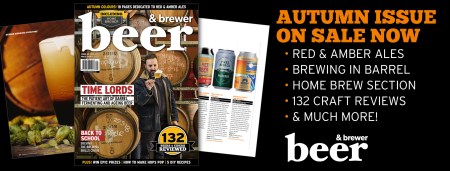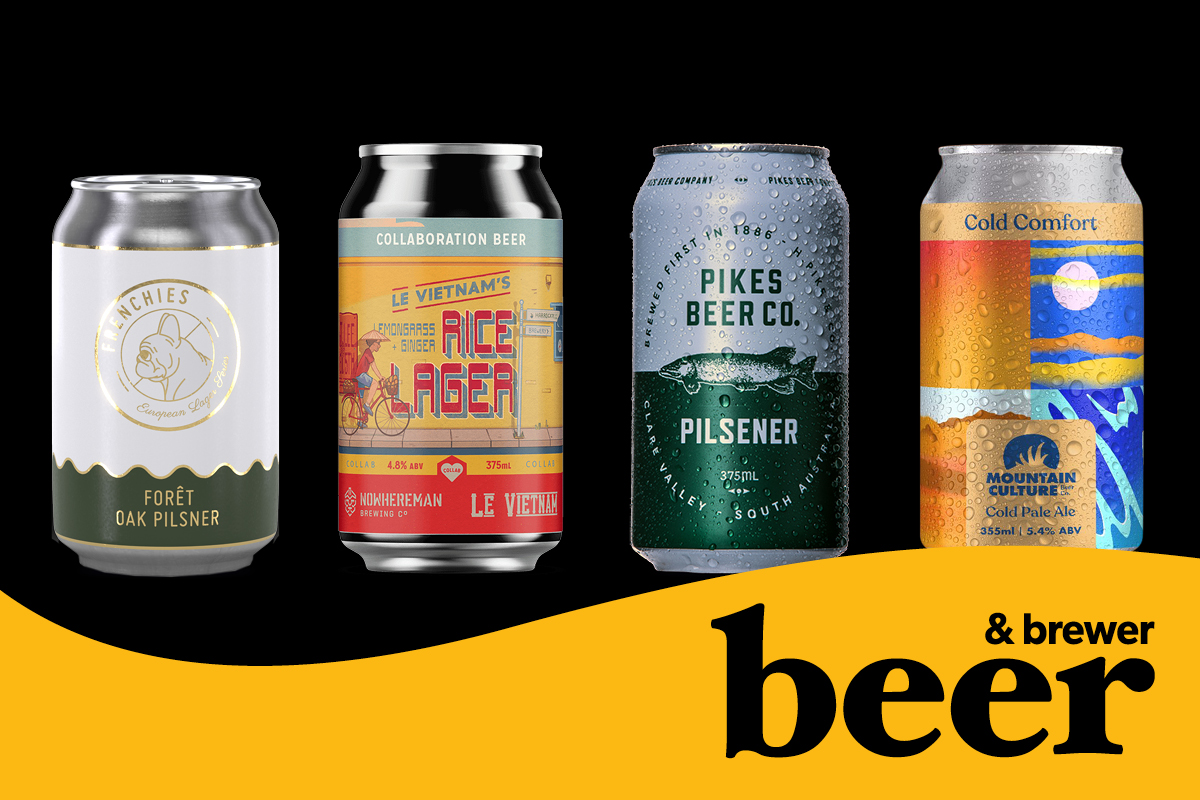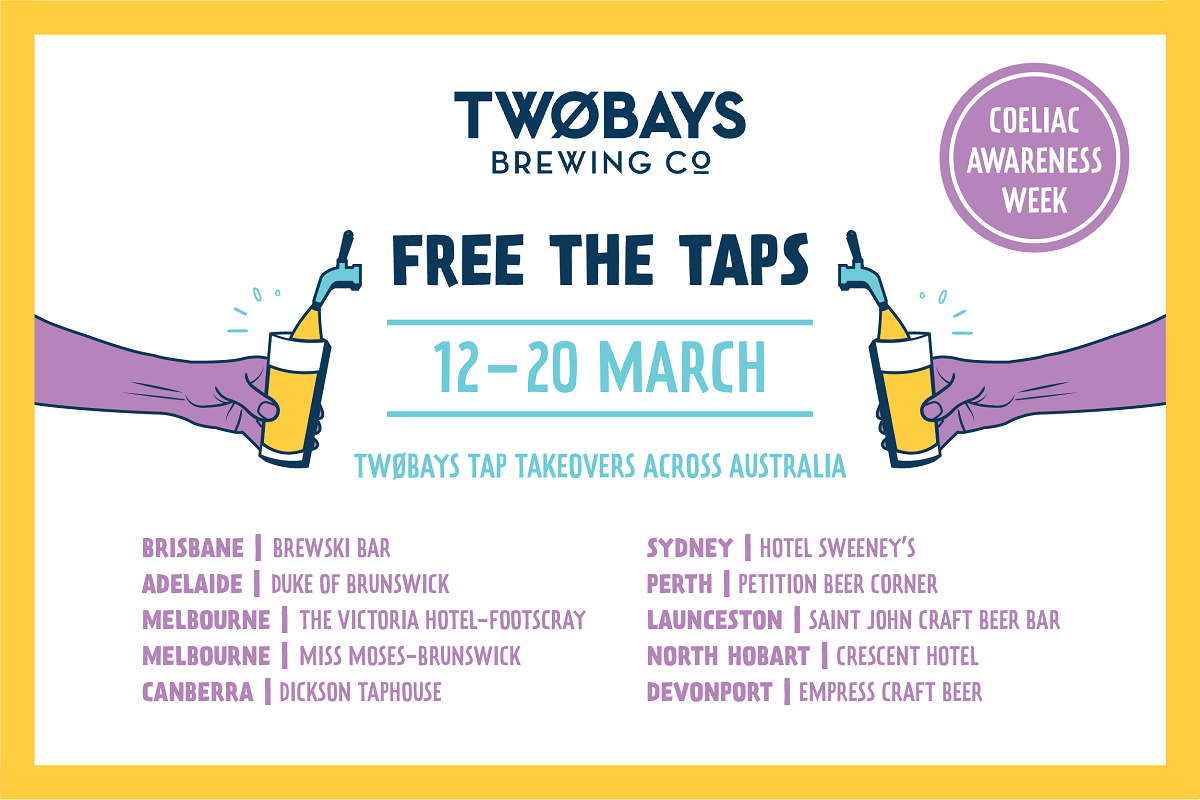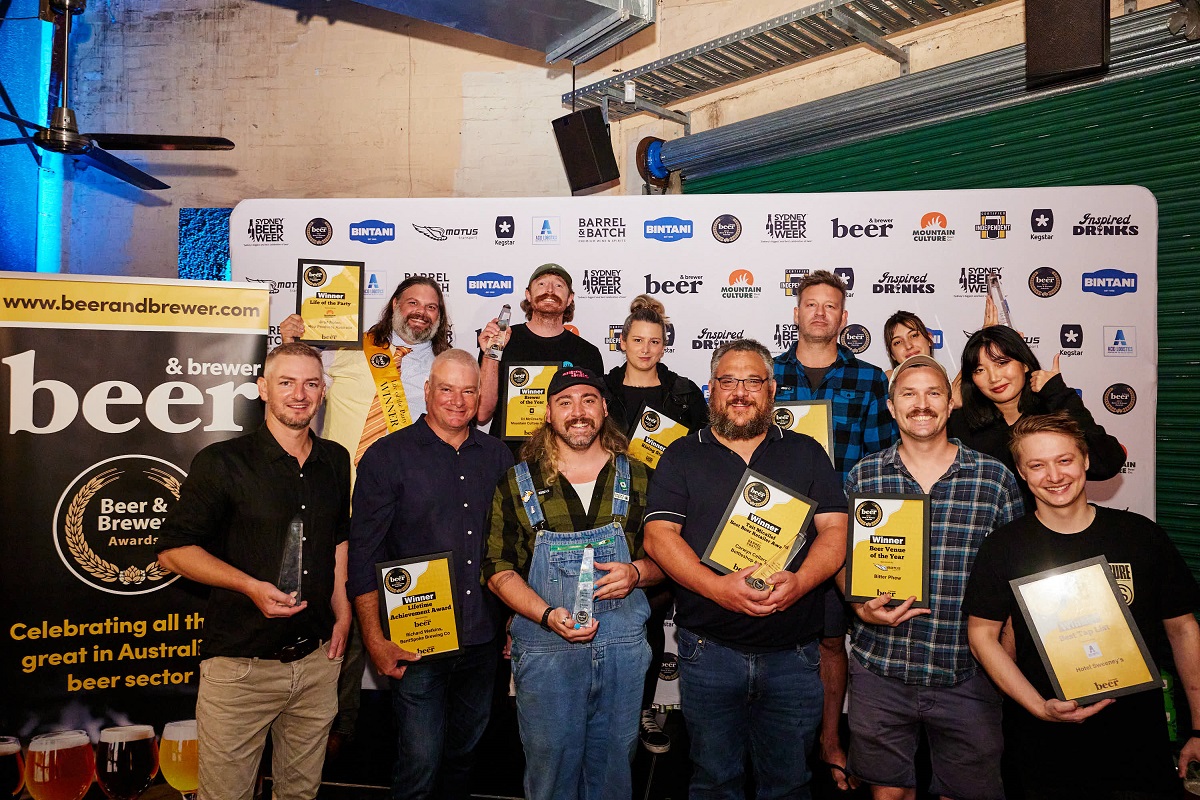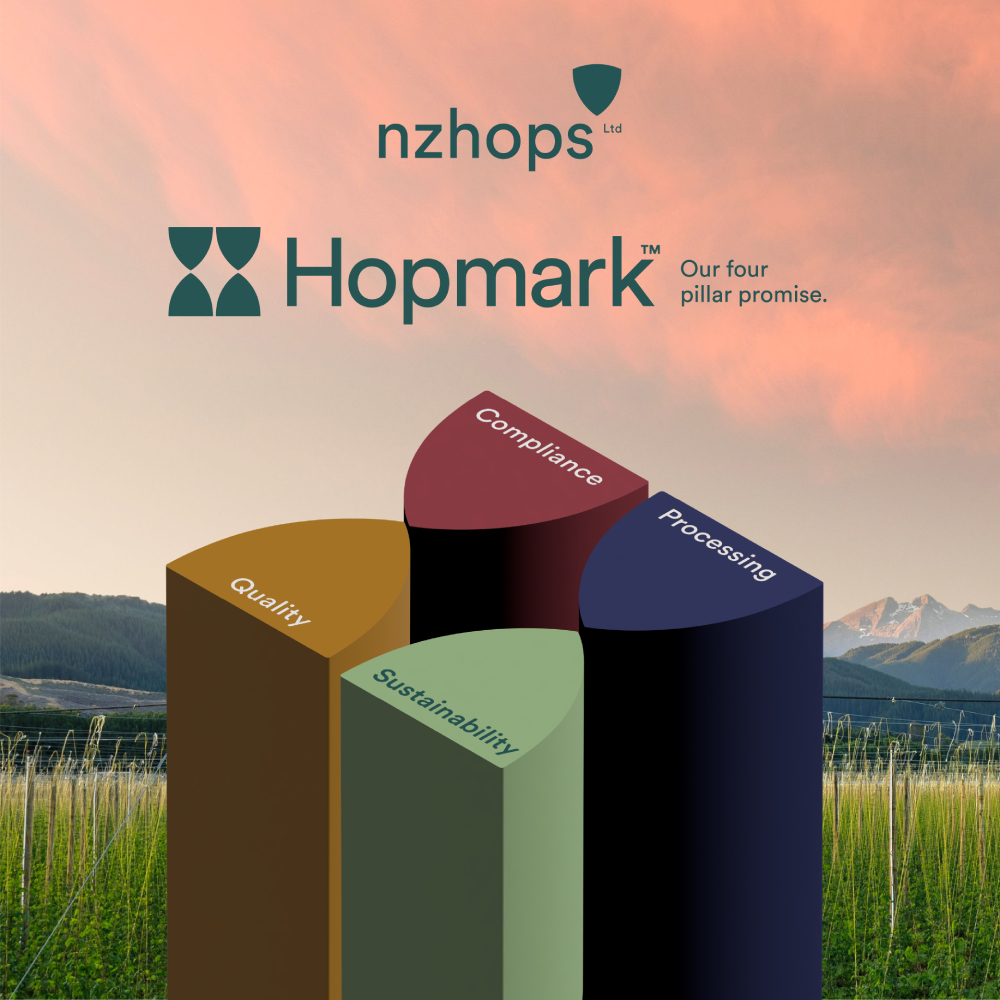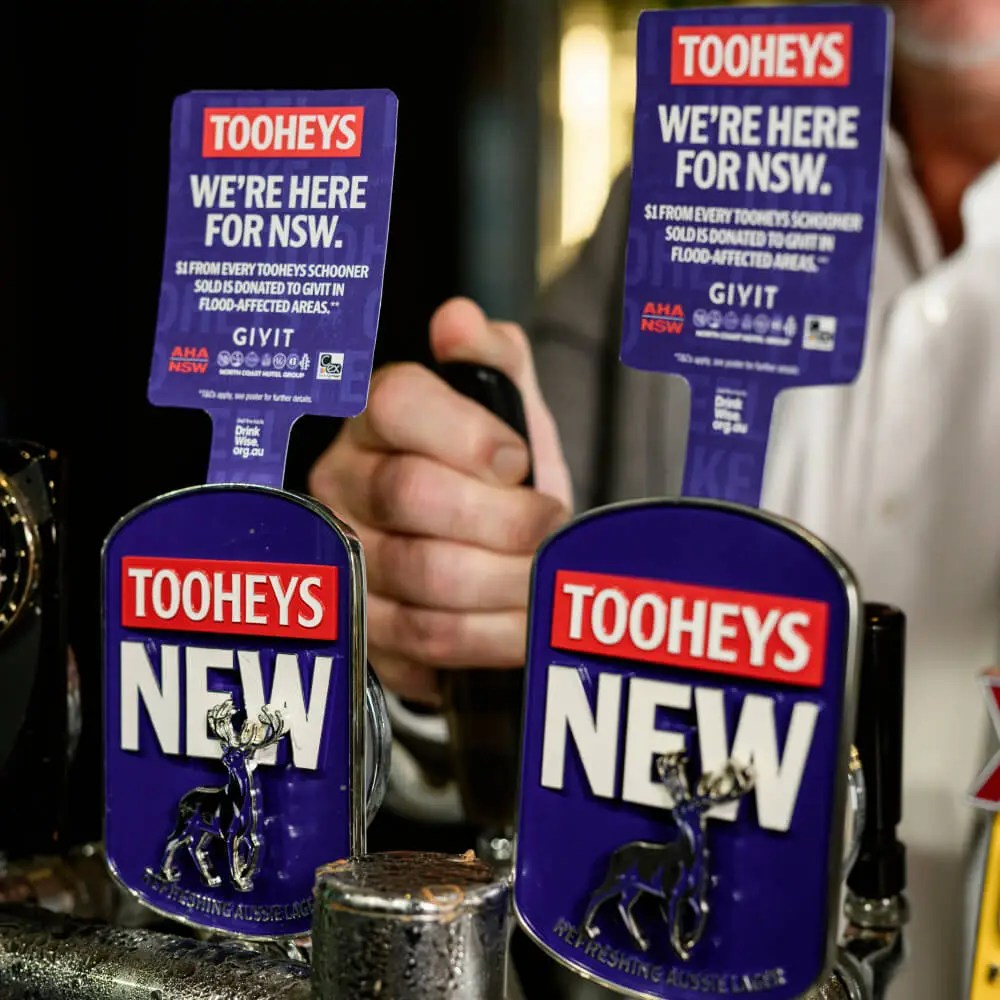
“Craft lovers expect us to be tweaking and doing what we can, rather than just doing what we expect from mainstream beers that are the same every time.”
Phil Sexton, Matilda Bay master brewer
(For want of a better analogy than associating craft beer with tuna – but running with it anyway) Matilda Bay have mimicked the John West advertising slogan by releasing 27 “near perfect brews” that were rejected in the brewing journey of their Owl Original Ale.
While “it’s the beer that Matilda Bay rejects that makes Matilda Bay’s Original Ale the best” didn’t quite make the cut in the extensive marketing collateral that accompanies their new Rejected Ales series, a similar principle applies: instead of the “nearly theres, the not quites, the yeah nahs (and) the good buts” never seeing the light of day, they’ve been canned and released to the public to “prove just how good their Original Ale is”.
Starting from reject number one, or so-named First Draft, through the likes of batch 04 A Fabulous Effort and batch 12 Frighteningly Close, then so on until batch 27 Final Draft, each of the 27 are like director’s cuts on the final version. For example, unlike the other 26 rejects, batch 05 Pure-Ish’s water was only filtered once, not twice. Or “a touch too much bitterness” was the reason for batch 09 Cheeky Silver’s demise. Or the hops being just out of balance saw batch 19 Hidden Miss miss out.
While you can read all about the Rejected Ales here (as well as where you can find them) we sat down with Matilda Bay’s master brewer Phil Sexton to find out a bit more about his habit of rejection in the pursuit of perfection. But we also gauge his thoughts on a range of other issues, including the current state of the Australian craft beer industry and why he feels beer made as simply as possible will always be the best beer. *And head all the way to the bottom to find out how one man’s trash really can be another’s treasure as some of these so-called rejects outshone the chosen one recently at a major awards.

B&B: If you cast your mind back, the new Matilda Bay brewery in the Yarra Valley opened on Boxing Day 2019 and it wasn’t long before the shutters came down across Victoria due to COVID-19. Do you think, if it hadn’t been for lockdown, would the Owl Original Ale have been released earlier and therefore many of these rejected ales would never have been trialled in the first place?
PS: In regards to releasing Owl earlier – yeah probably. We still would have kept on tweaking it though, yet we probably wouldn’t have been as bold with our trials, if that makes sense. (Lockdowns allowed us to say) ‘no stuff it, let’s try a different yeast’. (By doing) that it really demonstrated, really clearly, that if you’re making (a Golden Ale) style of beer you really need to work with an English style, top fermenting ale yeast rather than a German, bottom fermenting lager yeast. It’s like that because that’s the way it works. We wanted to try (an alternate yeast) because it would have made life a bit easier in the brewery because it would have meant that we’re not running multiple strains. But you have to recognise that you do need to run multiple strains in most craft breweries because one size doesn’t fit all.
B&B: I guess you may have had a pretty firm idea of what Owl would end up being, but during that trial and error phase, were you quietly surprised by some of those “let’s try this” ideas and that they ended up being really sound decisions?
PS: We didn’t have this (Rejected Ales) project in mind at the time. All we had on our mind (during phases of lockdown) was ‘we’re here, the brewery is up and running, we can access raw materials and we don’t want to lay staff off, so let’s practice’. We had to argue with our partners that the idea of making beer to ultimately tip down the drain wasn’t a bad idea. But we just said ‘we’re going to keep tipping this down the drain’ and we’ll try it ourselves (as well as filling growlers for the public). It wasn’t until we were getting ready to take Owl into the Victorian and WA markets that (Matilda Bay’s head of marketing) James (Aris) started looking at our rejections as a potential campaign – to highlight that slow crafted process of getting to where we ended up with Owl. But back to your question, what we discovered, which we ultimately couldn’t reflect in the Rejected Ales series, was that the more we simplified the brewing process – whether that was in the mash tun or the lauter tun, or how we were hopping, both in kettle, whirlpool or dry hop – the better the beer got. And that’s something I’ve learned throughout my career – that the very best wine is made in the simplest way, just let the ingredients tell you what to do and don’t overcook it. I think that is a really good example to the brewing team – who were all relatively new to brewing apart from Bruce Peachey (the former Bluetongue head brewer who joined Matilda Bay over a year ago in a mentor role) – of how to go about brewing well, and that is experiment and fiddle but keep on down that quest for simplicity for the way you make it. Beer will always come out best that way – and if you can’t simplify it, maybe you’re not going about it the right way.

B&B: Have aspects of the craft industry lost aspects of their craft through less and less trial and error and more and more of an attitude of “let’s just brew it and see how it goes”?
PS: My view, as I’ve sort of come back into the craft beer world three or four years ago, is that it’s just so confused and cluttered and everyone is just doing one beer with a different label every time. That’s kind of fun, but does that actually translate to being successful with a beer? Firstly, it takes more than one brew to perfect a beer. With anything I’ve made, we just keep perfecting them all the time and that’s one of the beautiful things about craft – that craft lovers expect us to be tweaking and doing what we can rather than just doing what we expect from mainstream beers that are the same every time. So I didn’t want to join that movement of ‘let’s come up with crazy labels’ and ‘let’s come up with something that’s more bitter than anyone else can do’ or ‘let’s use the newest hops that no one else has tried’. But rather say ‘no’ to that. My training and what I love is what I call professional brewing, which is to go about this thoughtfully and carefully and recognise the styles of beer we know today all have hundreds of years of provenance. So rather let’s say ‘let’s use the bones and the materials that we can get hold of and craft beers that we like and we think our consumers will like’. And that’s where we started out with Owl.
I’ve seen three waves of craft in Australia… There was the first wave that died out in the early 90s before a second wave that went from about the mid 90s to somewhere between 2010 and 2015. And now there’s this third wave, which really hasn’t brought many classic craft beers that are sticking. For me, it’s almost like (craft breweries) have been going in to a flooded market place, it’s really hard to get attention, it’s hard to get into venues in any consistent way… and to be able to survive there’s become this tendency to take the easy route – and that is ‘let’s just do something that stands out’ and people give you the instant gratification by saying ‘I have to try it’. But that, I don’t believe, allows you to stick. If you take (Matilda Bay’s) Alpha (Pale Ale) for example, which is not even our beer, it’s Brad’s (Rogers) beer. We’ve been messing with it for a while just trying to get it back to how I remember it… and to just get simple with it and just let those Cascade hops work. Things take time.
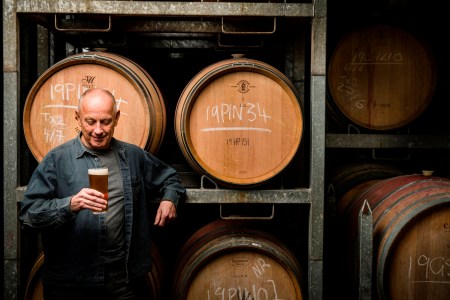
B&B: What are you currently working on and rejecting in the pursuit of your next big release?
PS: We’re doing a lot of work quietly behind the scenes with something I’m really curious about – and that’s the world that exists somewhere between wine and beer. I don’t know which world I prefer – because I love them both – but we’re working somewhere in the middle with super attenuating yeasts which some people like to call saison yeasts. Where we can actually make bone dry beer with fairly aggressive yeasts that are great at protecting the product from other bacteria. And then starting to explore the use of local fruit with it, but not infusing the way people just add fruit to beer. Making it with some local fruit, with old Belgian techniques, is something I think is really fascinating. After six months of barrel maturation we’re probably only a few weeks away from bottling our first that’s made with cherries in a saison-style. Then it will go into a second bottle re-fermentation stage for up to a couple of years. I know others are already doing this, but what does intrigue me is the thought ‘why can’t we as brewers imagine that people will pay $30 for a bottle of our beer?’ People say ‘oh you can’t do that’. But $30 for a bottle of Yarra Valley Chardonnay from Giant Steps (which Phil is the founder of and whose cellar door shares the same location as the Matilda Bay brewpub) is a bargain and people snap it up. Why as brewers do we have this mindset that that’s not our territory? This is probably the most craft-focused project we’re working on – but it’s also the one we’re most motivated about.
One man’s treasure
At the recent Royal Queensland Beer Awards, and as a fitting footnote to the Rejected Ales project, some of the supposed rejects would go on to outshine the chosen one. In the Classic English-Style Pale Ale category batch 23 Keep Dreaming and batch 14 Yeah… Nah both took silver medals with scores of 16 and 15.5 out of 20 respectively while batch 19 Hidden Miss won silver with an even 15. The Owl Original Ale would also get bronze but with a overall score of 14. At the same awards the Dogbolter Winter Ale would prove Matilda Bay’s highest rated submission by earning gold in the German-Style Altbier category with a final points score of 17 and winning the trophy for Champion Amber-Dark Ale in the process.
